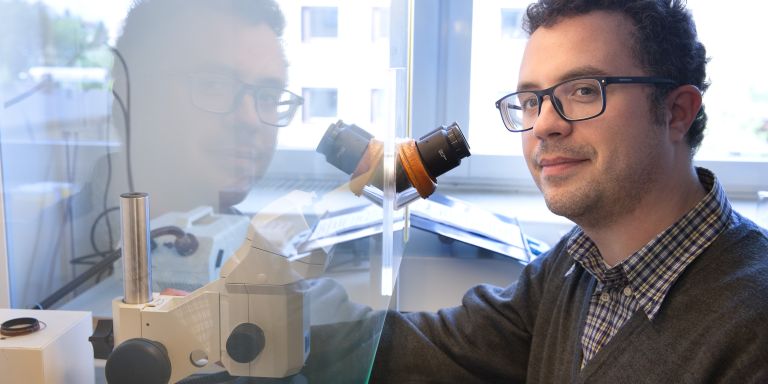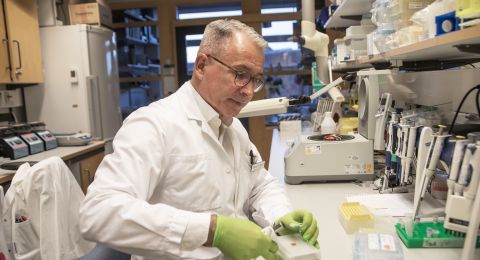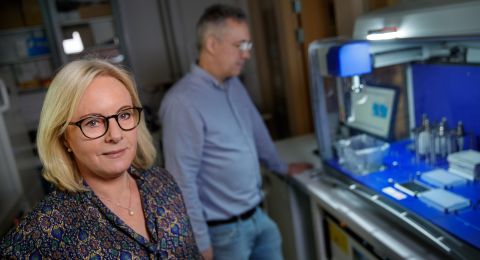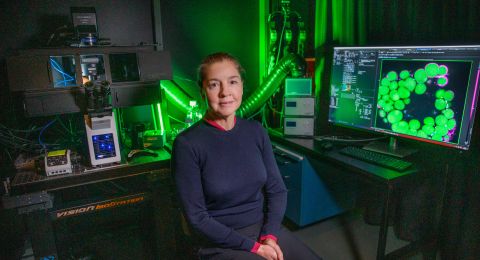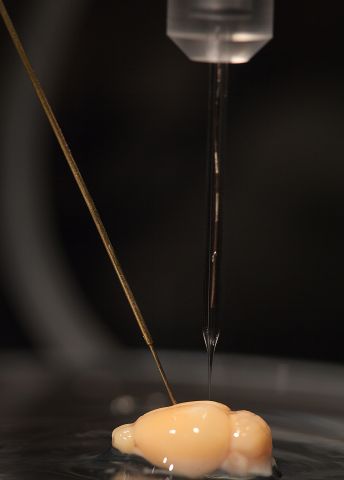
Project Grant 2014
The brain microcircuits integrating information from several senses
Principal investigator:
Paolo Medini, Doctor of Neurobiology
Institution:
Umeå University
Grant in SEK:
SEK 29.3 million over five years
To experience what we see and hear at the same time – for example a telephone ringing – the brain must coordinate information from two sources. The process is called multisensory integration, and Paolo is studying it with the help of a grant from the Knut and Alice Wallenberg Foundation.
“We do not yet know how multisensory integration works. We lack knowledge of fundamental importance in the medical field,” Paolo says.
Sensory impressions coordinated in the brain
Sight, hearing, smell, taste and touch are triggered in various ways by external stimuli.
Sight is a result of the ability to distinguish electromagnetic radiation, and hearing is activated by sound waves. Receptors on the tongue help us to taste things, and smells are captured by receptors in the nose. Our sense of touch reacts to contact, pressure or a blow to the skin.
All these impressions are communicated to different areas of the brain for processing: sight to the rear of the cerebrum (visual cortex), hearing to the auditory cortex, and touch to the upper part of the brain stem and to the tactile cortex.
Each area of the brain is made up of different classes of neuron (nerve cell), which are linked in microcircuits. In order to combine two of more sensory impressions the information must be processed in areas specifically responsible for multisensory integration.
Imagine an apple activating the visual memory: we see before us a specific shape and color. But we also remember how it feels to hold an apple in our hand. We remember the weight, texture and sound of taking a bite. And the test, the smell – the chemical sensations activated in the mouth and nose.
“All this information from our different senses is combined and stored in the memory in our brain,” Paolo explains.
Actions controlled by the brain
Paolo and his team are studying not only how microcircuits integrate information from different senses, but also how they control motor activities, and tell us how to act in a given situation.

The brain’s microcircuits have been refined by evolution. Over millions of years, predators have learnt how to move silently and invisibly to surprise their prey. Likewise, all those under threat from predators have become good at detecting their presence.
Information from our senses causes us to react to the combination of shadows and sounds, for example. “If I see a predator to the right, I must flee to the left.”
“Survival is the top priority for living organisms. This includes humans and animals,” Paolo points out.
In this new project, the researchers will be examining how the brain’s microcircuits use different senses to build up our memories, while creating our personality at the same time.
“People who lose their memory also lose their identity,” Paolo observes.
The researchers will also try to ascertain how microcircuits are affected when someone loses a sense, becoming deaf or blind, for example.
“In these situations the brain may be supported by another sense so it can know what motor response is most appropriate,” explains Paolo.
Potential to revolutionize medical treatment
Paolo thinks that knowledge about integration of multiple sensory information to produce motor outputs may have an enormous impact on the future of medicine. For instance, transplanting stem cells capable of developing into neurons does not suffice. We also need to know how the transplanted neurons are to be integrated.
“When we have understood how different cell types communicate in the intact brain, we can work out new strategies to re-activate or re-create microcircuits that work. These require specific electrical (synaptic) connections between neurons,” Paolo explains.
He believes that knowledge about the microcircuit network may also revolutionize care of patients with neurological or psychiatric diagnoses.
“In the long run I hope to be able to show the scientific community how words and feelings impact our microcircuits, and how we can modify them by learning to express what we think and feel. We change the connections in our brains by talking,” he says.
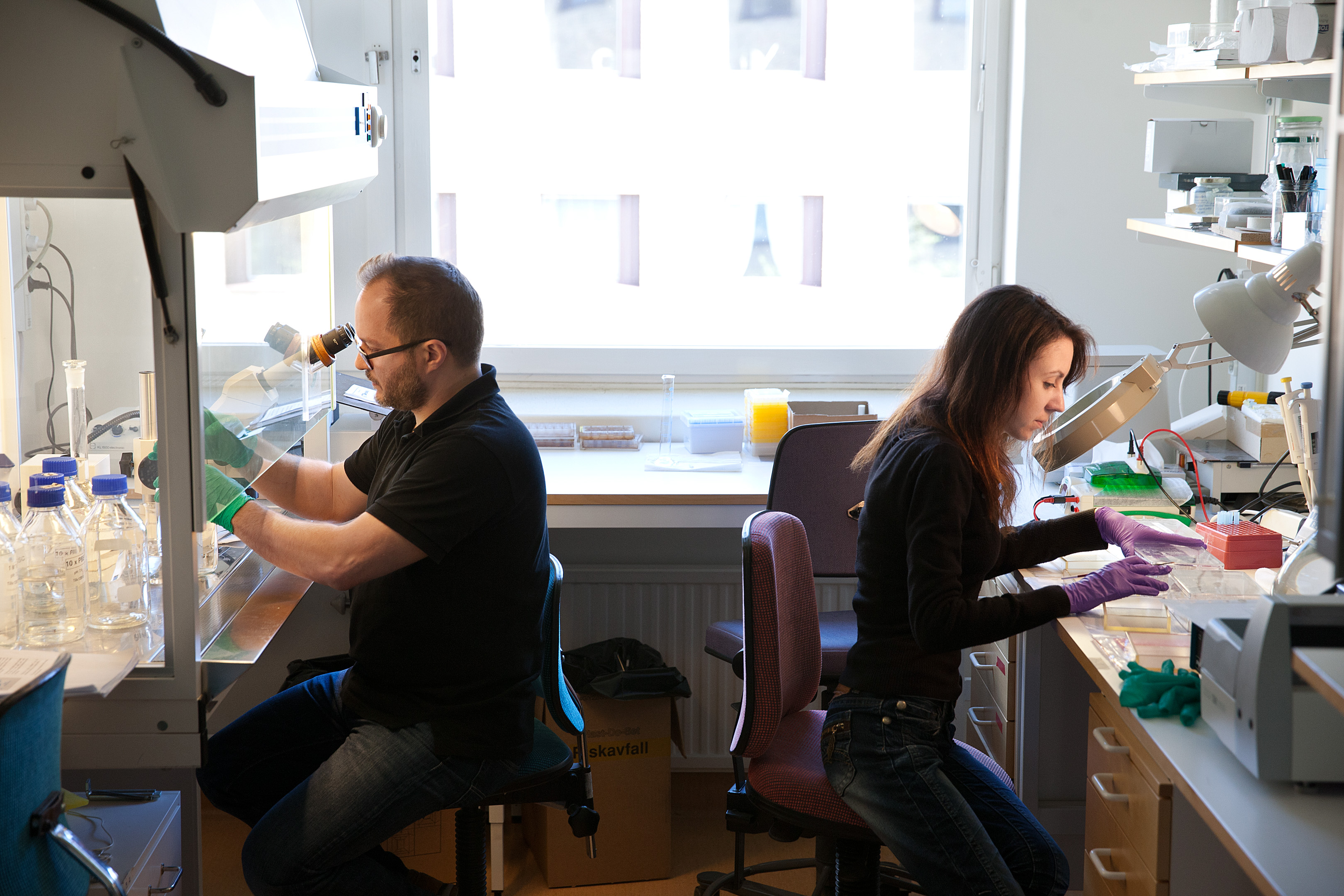
Multidisciplinary collaboration
Paolo himself is a medical doctor, and has biologists, mathematicians, physicists and engineers in his team. They are working in research laboratories using highly advanced equipment.
“It is now possible to inject fluorescent dyes into living cells and study them in a microscope from outside the body. A special laser illuminates the cells. We are thus combining optical techniques with electronic ones to monitor cells without using invasive electrodes in the brain.”
But as yet there is no method of studying optically the electrical activation of large groups of neurons in different brain areas.
“Eventually I hope to be able to measure electricity in various parts of the brain in an individual under anesthetic. It would be a huge leap forward to be able to see neurons at work in human beings,” he adds.
Text Carin Mannberg-Zackari
Translation Maxwell Arding
Photo Magnus Bergström
